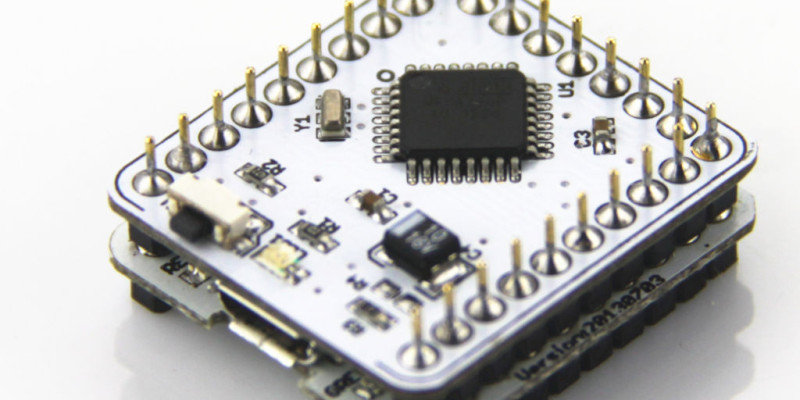A regular Arduino is pretty small; a credit card sized board isn't too large for most applications. Microduino is an Arduino-compatible board that's about a square inch in size. That's the size of a quarter (or a 10p in the UK). The tiny size of the Microduino is down to splitting up the controller and communication on to two boards, and then stacking these boards on top of each other.

The two boards stack together by using a standard U-shaped pin-out. All of the Microduino core boards and extensions have this U-shaped layout (UPin-27).
There are 2 core boards, and 1 communication board. The Microduino-Core is the same as an Arduino UNO, and the Microduino-Core+ is a performance edition with the power of a Mega2560. They both use the same controller for uploading code to the Core and Core+.
There are a variety of extension modules available; Ethernet, wireless, Bluetooth, Micro SD, battery management, 10DOF sensor, OLED display, real time clock, GPS and a power amplifier. This array of simple shields lets you get a variety of different projects up and running straight away. As the communication and core boards are separate, you can upload your code to the Core, and remove the communication board and reuse it in another project. This keeps the cost down compare to say, an Arduino Pro Mini, as you only need to embed half of the board into your project.

Due to the small size of the Microduino, it can be used in weight-critical applications such as robotics and helicopters. There are a few projects that have been started already, such as a university professor that created a "smart garden" that monitors soil moisture, temperature and wind exposure over the internet. Another project involved mounting a Microduino with a GPS logger that attached to his bicycle, for tracking his movement. A full list of boards and projects can be found on the Microduino Wiki.
The Microduino really shines with the clever approach of having 2 separate stackable modules, so you can reuse the communication half. It really is a no-brainer for those who make embedded projects. The Microduino is on Kickstarter now, although it's smashed its $20,000 target. You can still donate however, and you can get your own Microduino starting from $20.
EDIT:
The campaign has finished - you can buy the modules directly from microduino.cc.
